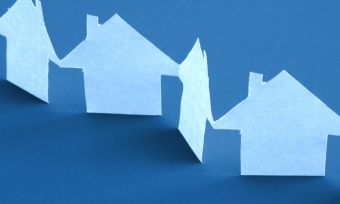If you’re considering taking out a home loan, you may have some questions you’d like answered. Here are some common queries people search for when researching home loans, complete with links to articles containing further information.
Please note that these are a general explanation of the meaning of terms used in relation to home loans or mortgages.
The wording of loan terms and conditions may use different phrases or terms, and you should read the terms and conditions of the relevant loan to understand the features and cost of that loan. You cannot rely on these terms to be part of any loan you may take out.
How to get a home loan
Generally speaking, the process of obtaining a home loan involves comparing your options, working out how much you can afford to borrow for the property you want to buy, and then applying for a specific home loan – either directly to the lender of your choice or, indirectly, via a mortgage broker.
If the lender approves your application and agrees to lend you the money you requested, it will offer this money to you in the form of a home loan. You will then need to pay back the loan over time, in line with the lender’s terms and conditions.
How much can I borrow for a home loan?
The amount of money you are able to borrow for a home loan will depend on your personal financial circumstances, as well as the loan provider you choose and its lending policies.
You may be able to borrow more or less money depending on the lender’s assessment of your circumstances, which could include your credit score.
How much deposit do I need for a home loan?
As a general rule of thumb, it’s often worth saving up a deposit of at least 20% of the value of the property you want to buy.
Lenders may also refer to this as a maximum loan-to-value ratio (LVR) of 80%, with your deposit being the other 20%.
The reason this number is important is that borrowers with smaller deposits often have to pay extra for lenders mortgage insurance (LMI), which we explain in more detail below.
Another advantage of saving up as big a deposit as you can is that it can reduce the total cost of your home loan, as interest is only charged on the money you borrow.
What is a fixed rate home loan?
A fixed rate home loan is one that has an interest rate that is locked in place, or fixed, for a set period.
What is a variable rate loan?
A variable rate home loan is one that has an interest rate that can fluctuate, depending on the market conditions and the decisions of your lender.
How do I calculate home loan interest?
An interest rate is the proportion of the outstanding home loan amount that you have to pay as a fee for borrowing the money each year. A common practice is for lenders to spread out the interest you pay throughout the full term of the loan.
Canstar has a free mortgage repayment calculator that allows you to work out how much interest you might have to pay on a home loan, based on the amount you borrow and your interest rate.
Bear in mind that our calculator doesn’t include the costs of any upfront or ongoing fees and, for simplicity’s sake, it assumes your interest rate remains the same throughout the full term of the loan.
How to refinance a home loan
The process for refinancing a home loan is similar to applying for a new home loan. As a borrower, you have the choice of which home loan to apply for, and from which lender. You don’t have to stick with the same lender who issued your original loan.
If you do decide to switch lenders, you will have to go through a new mortgage application process, which involves paperwork and, often, application fees and charges.
However, the extra hassle and expense of switching lenders can prove financially worthwhile if you can secure a home loan with a lower interest rate.
Should I fix my home loan?
The decision whether or not to fix your home loan is a personal one, and should be considered carefully in light of your financial needs.
For example, if you think variable interest rates will rise in the near future, getting a good deal on a fixed rate could be one way to lock in a rate you’re happy with for a few years.
On the other hand, if interest rates fall in the short term, locking in for an extended period could mean you miss out on the chance to secure a lower rate and interest repayment savings.
Of course, accurately predicting financial markets is impossible. So, to hedge your bets, you are often able to split mortgages into sums at different terms and rates.
What are break costs?
A break cost, or break fee, is the charge some lenders apply to people who want to end their fixed-rate home loans before the end of the fixed-rate terms in their contracts. The fee is designed to compensate the financial institution for any loss of profit it faces as a result of a customer breaking the terms of the contract, including for administration and its own wholesale borrowing costs. It does not typically apply to other types of loans, such as variable-rate loans.
However, it’s worth noting that many lenders will be happy to refinance a home loan without charging a break cost if you are refinancing your loan to one with a higher rate.
How long does home loan approval take?
The length of time it takes for a lender to approve or reject a home loan application varies, depending on factors such as the particular lender and the mortgage applicant’s financial situation.
In some cases, obtaining home loan pre-approval, or conditional approval, can speed up the time it takes a lender to assess a formal mortgage application.
What is home loan pre-approval?
Home loan pre-approval, also known as conditional approval, is the initial approval process when a bank provides a borrower with an estimate of how much they can borrow, based on the financial information they have provided.
Pre-approval does not necessarily mean the bank will approve the borrower’s formal home loan application, but it can, nonetheless, provide a borrower more confidence when working out how much they can realistically afford to spend on a property.
What is lenders mortgage insurance (LMI)?
Lenders mortgage insurance is a type of insurance that a lender takes out to protect itself in case of default from a borrower, but which the borrower must pay for.
It usually applies to home loans with a high LVR (more than 80%), when the borrower has a deposit of less than 20% of the property’s value.
LMI is charged as either a one-off sum, which is usually added to the sum borrowed, or as a premium interest rate, charged until the home owner’s equity in their property reaches 20%.
What is LVR (loan-to-value ratio)?
The loan-to-value ratio (LVR) of a home loan is the amount borrowed as a proportion of the lender’s valuation of the property’s worth.
For example, a bank may approve your loan for 80% of a property’s value – an LVR of 80% – in which case you will need to pay the remaining 20% as your deposit. Many lenders’ best mortgage rates are reserved for borrowers with low LVRs.
What is a credit rating (credit score)?
A credit rating, or credit score, is an assessment of the creditworthiness of an individual borrower, based on their borrowing and repayment history (as shown on their credit report).
Lenders consider your credit rating when deciding whether or not to give you a loan, how much to lend you, and what interest rate you will pay.
What is equity?
Equity is the difference between the value of your property and the outstanding balance of the loan that was used to fund it. For example, if an owner purchases a house valued at $400,000 and pays the loan down by $100,000, they have equity in the property of $100,000.
Equity can, potentially, be negative. Negative equity occurs when a property’s value falls below the balance of its outstanding mortgage.
Property investors often use positive equity in the properties they own to access additional investment home loans.
What is the First Home Loan?
The First Home Loan, supported by Kāinga Ora, supports FHBs who only have enough for a 5% home deposit, making it easier to get into a home with a low deposit.
Originally, the First Home Loan was only available for houses priced under strict regional price caps. However, in the 2022 Budget the price caps were removed. So, with a First Home Loan, it’s now even easier to secure a loan for a home with a deposit of just 5%.
Here are the key criteria for First Home Loan eligibility:
- Income cap: you can have a maximum yearly income of up to $95,000 (before tax) for one person. Or a combined maximum yearly income of $150,000 (before tax) for two or more people
- Minimum deposit: you will need a minimum 5% of the purchase price of the house you want to buy
- First home buyer: you must be a first home buyer or a previous home owner in a similar financial position to a typical first home buyer
→ Related article: What is the First Home Loan?
What is the First Home Grant?
The First Home Grant and First Home Loan are both offered through Kāinga Ora, but they are not the same thing, although they can be used together.
The First Home grant is available to FHBs who have been contributing at least the minimum amount to KiwiSaver for three years or more. It providers eligible FHBs with:
- a grant of up to $5000 for individuals and up to $10,000 for two or more eligible buyers to put towards the purchase of an existing/older home
- a grant of up to $10,000 for individuals and up to $20,000 for two or more eligible buyers to help with the costs of purchasing a brand new home
You receive $1000 for each year you have been a KiwiSaver member, up to a total of five years. This means you could get $3000, $4000, or $5000 to put towards a deposit. If you’re buying a new build the grant doubles to $2000 per year.
Note: regional price caps still apply for homes available to purchase under the First Home Grant scheme. However, some of the caps were raised in the 2022 Budget. You can get more details from the Kāinga Ora website here.
Can you buy a house with no deposit?
While certainly not the norm, you may be able to secure a loan of 100% of the purchase price of a home through some lenders if you can meet certain strict conditions, such as having a guarantor on the loan. Such loans are usually determined on a case-by-case basis by the lender.
That said, it’s not common for lenders to offer home loans to borrowers with no deposit.
What is a home loan guarantor?
If someone acts as a guarantor for your loan, it means that they promise, or guarantee, to be legally liable for the loan if repayments are not made.
As such, when applying for the loan, the guarantor must also demonstrate their capacity to repay the loan.
How does negative gearing work?
Negative gearing is when the income (such as rent) that an investor makes from an investment property is less than the interest and fees on the home loan and the maintenance costs for the property. However, some costs associated with property investment are available as a tax deduction against an investor’s income.
What is a mortgage offset account?
A mortgage or home loan offset account is a savings account, or accounts, linked to your home loan to reduce the interest charged on the loan. The money (or credit) in the account(s) is offset daily against the loan balance, which reduces the daily mortgage interest charges.
What is a redraw facility?
A home loan redraw facility is a feature that enables a borrower to withdraw funds they have already paid. Usually, this is conditional on the mortgage holder being ahead on their loan repayments. A redraw facility is not available on all loans.
What is a mortgage broker?
A mortgage broker is a type of financial professional who specialises in helping their clients to find a home loan. Their job is to gather information about the needs of their clients and to suggest lenders and products that match those needs. Once they have helped their client to select a home loan, a mortgage broker may also assist the home buyer with the application process.
What is a construction loan?
A construction home loan is a type of mortgage designed for people who are building a home or doing major renovations, as opposed to buying an established property. It has a different loan structure to home loans designed for people buying existing homes.
What is a bridging loan?
A bridging loan is a special type of short-term loan designed to cover the cost of a second property and to give the purchaser time to sell their existing home, even if they already have a mortgage. It essentially creates a financial bridge, allowing homeowners to traverse the gap between buying and selling.
 About the author of this page
About the author of this page
This report was written by Canstar’s Editor, Bruce Pitchers. Bruce has three decades’ experience as a journalist and has worked for major media companies in the UK and Australasia, including ACP, Bauer Media Group, Fairfax, Pacific Magazines, News Corp and TVNZ. Prior to Canstar, he worked as a freelancer, including for The Australian Financial Review, the NZ Financial Markets Authority, and for real estate companies on both sides of the Tasman.
Enjoy reading this article?
You can like us on Facebook and get social, or sign up to receive more news like this straight to your inbox.
By subscribing you agree to the Canstar Privacy Policy




Share this article